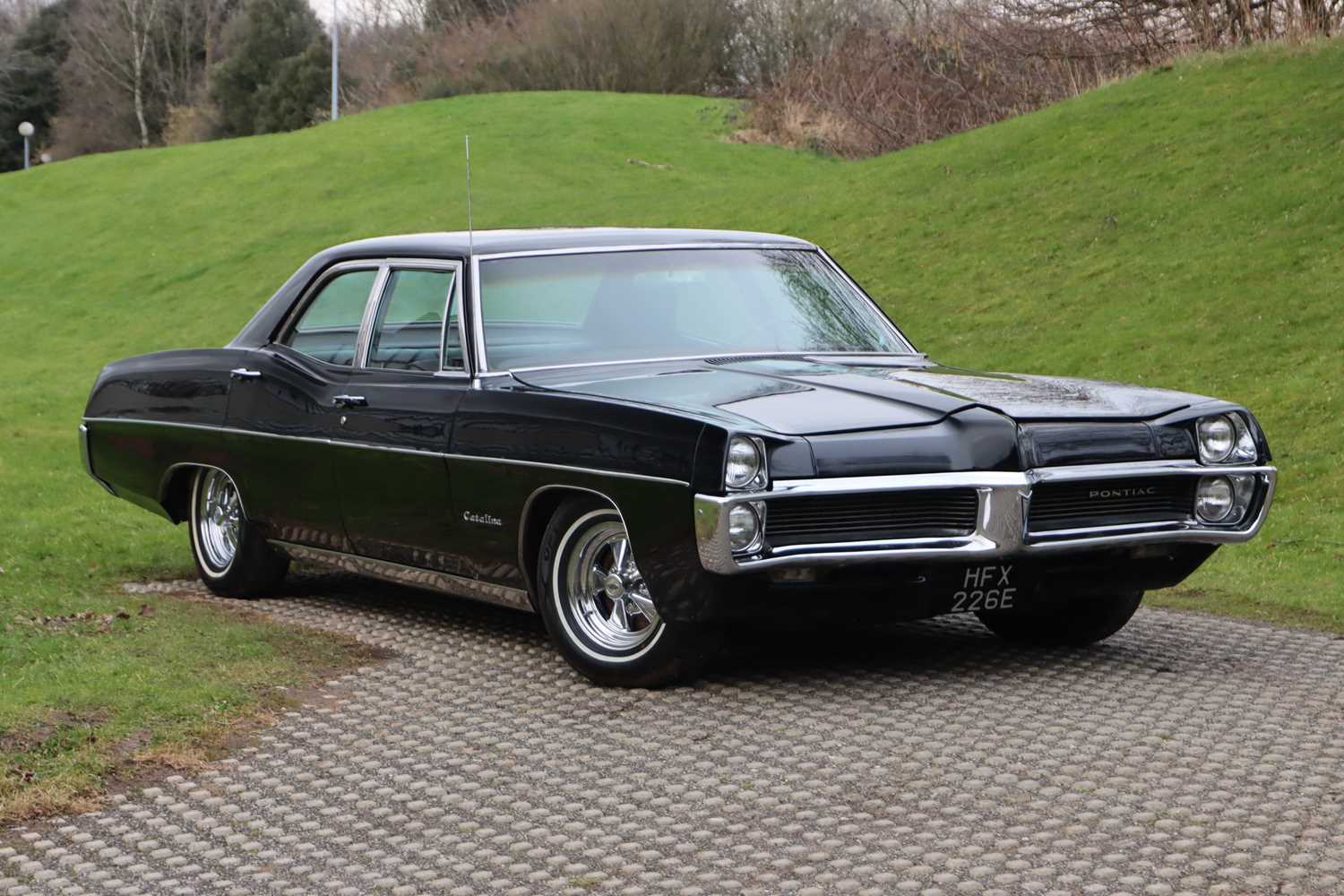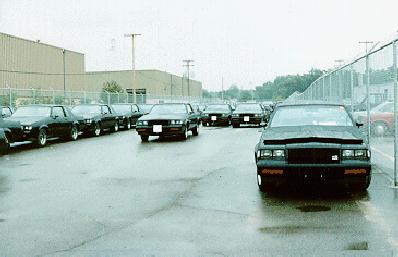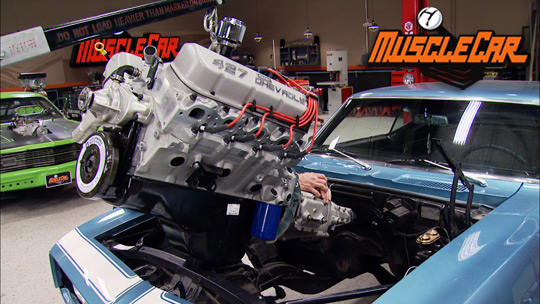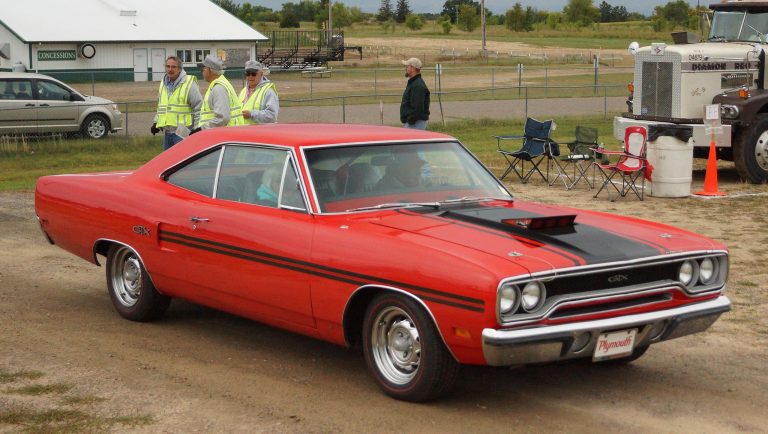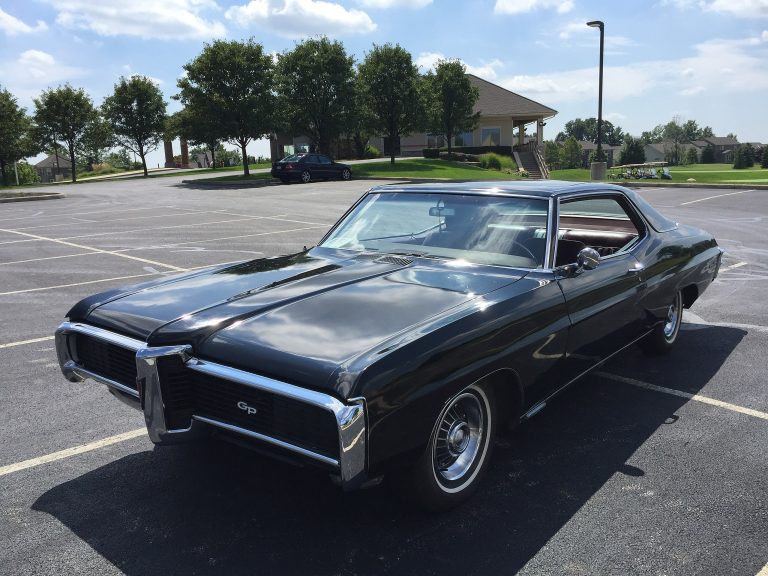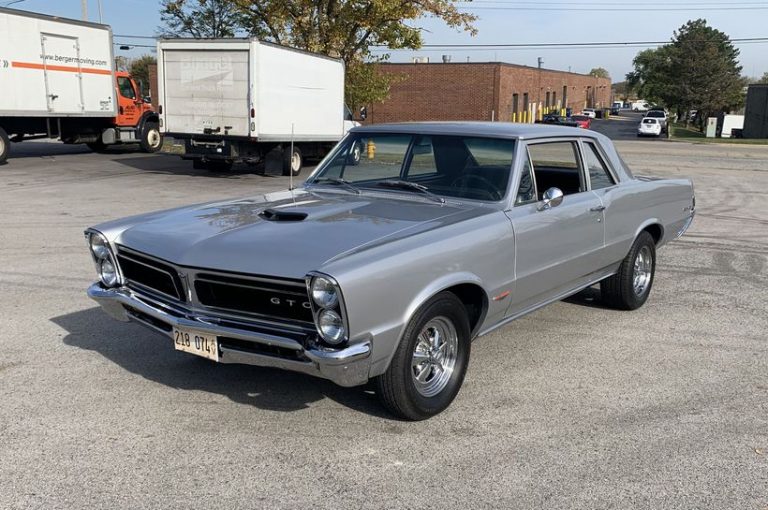Best Pontiac Muscle Cars

Meet Austin
Austin has been a muscle car enthusiast since an early age with his Dad having a collection including a 1965 Mustang, 1968 Mercury Cougar, and a 1969 Mustang Mach 1 among many others. Austin received a technical writing degree from University of Colorado Denver with the intentions of becoming an automotive journalist. His automotive knowledge, enthusiasm, and hands on experience allow him to craft detailed, accurate, and high-quality articles for the passionate Muscle Car Club audience.
Pontiac is one of the first brands that comes to mind when the topic of muscle cars is brought up. While Pontiac might not receive the same kind of reputation that companies like Chevy or Ford have in the muscle/pony car world, the origins of the muscle car class can largely be traced back to Pontiac. As the second tier in the General Motors totem pole, Pontiacs were known to be a slight step up from the Chevrolet marque, but still within reach of the blue-collar working man. While Pontiac was first known for their full-size family haulers like the Pontiac Chief, a brand identity shift in the 1950s transformed Pontiac into a player in the performance market.
As a result of John De Lorean’s restructuring of Pontiac, the brand quickly became GM’s performance-oriented tier. Over the course of the late 1950s and 1960s, Pontiac released some of the most iconic muscle cars ever to hit the streets. Pontiac V8 engines were renowned for being reliable and punchy powerhouses, taking some of their most famous models to new heights and setting the benchmark for muscle cars to follow.
Pontiac’s Early History
In a way, Pontiac didn’t start out as Pontiac at all. By all accounts, Pontiac seemed to be the inferior sub-brand under the Oakland division of General Motors. By the mid-1920s, Pontiac demonstrated that they shouldn’t have been underestimated, outselling the parent Oakland brand. As a result, General Motors decided to retain the Pontiac brand in favor of Oakland, making Pontiac the only sub-brand to outlast the parent brand in the GM hierarchy.
The 1920s were a lucrative time for Pontiac, becoming one of the best-selling brands in the US at the time. A lot of their success could be distilled to Pontiac’s use of the wildly popular Chevrolet-derived 6-cylinder engine. By the early 1930s, Pontiac increased the cylinder count to 8, releasing the Pontiac straight-8 engine in 1932. The Pontiac Streamliner and Pontiac Torpedo would be the main vehicles in the Pontiac lineup through the early 1940s.
By the early 1950s, it was clear that inline 8-cylinder engines were becoming outdated and underpowered. Pontiac’s solution, along with many other competing brands, was to develop their new model lines around a more popular V8 engine design. That is where the Pontiac Strato Streak V8 engine comes into play. The Strato Streak V8 was introduced in 1955 with a 287 cubic-inch displacement, producing 173 horsepower. The Strato Streak V8 ushered in a new era for the Pontiac brand and laid the groundwork for the V8 Pontiac muscle cars to come. The 287 V8 also served as the basis for many of Pontiac’s future V8 engine designs, which were almost identical to the original engine’s construction just with higher displacement.
Pontiac Muscle Car Beginnings
It wasn’t until a change in management in 1956 that things really started to evolve for Pontiac. In the prior decade, Pontiac was still doing well, but many of the models that had been successful in the early part of the century had become outdated, antiquating Pontiac slightly. As a result, Semon “Bunkie” Knudsen and John De Lorean were brought in to revitalize Pontaic with a new, sportier image. And, that is exactly what they did.
The combination of new models and new engine configurations marked a period of great success for Pontiac in the mid-to-late 1950s. The Pontiac Bonneville was introduced in 1957 at a high price point but with a promise of luxury and performance. The tri-power carburetor was introduced to the Pontiac lineup, which became a staple of the brand’s performance V8 engines. A tri-power carburated Pontiac Bonneville was used as the pace car for the 1958 Indianapolis 500, further cementing Pontiac’s performance aspirations in the minds of many.
Pontiac had been making a splash in the NASCAR scene as early as 1957, winning the NASCAR Grand National with a 347-cu. in. powered Pontiac. The success would continue in the years to come, winning tens of NASCAR races, many of which in the Pontiac Catalina. The late 1950s was the introduction of the Pontiac 389 V8 engine which would become notorious both in professional racing series and in Pontiac street cars. The Pontiac Tempest was released in 1961 to critical acclaim. The Tempest featured new handling characteristics and 50/50 weight distribution that would make it a popular model. The Tempest would give way to the Le Mans later that year, which would eventually spawn one of the most famous muscle car models of all time, the Pontiac GTO.
Pontiac’s Muscle Car Era
While it can be argued that the muscle car formula had already been established before Pontiac entered the game fully in the early 1960s, they certainly did it best at the time. In the first part of the 1960s, Pontiac experimented with a few different engine options for the new mid-sized Tempest and Le Mans. One option was the 4-cylinder “Trophy-4,” derived from half of the 389 V8.
Pontiac also offered a Buick 215 cu in V8 and a Pontiac 326-cid engine, with the most powerful 326 being the most popular option. That trend would continue in 1964 when Pontiac released the GTO. It was originally a trim level for the Le Mans and later its own model. It debuted with the 389 V8 producing either 325 or 348 horsepower in tri-power form. The GTO also featured bucket seats, performance suspension, and other features that made it stand out as a true-performance vehicle.
In 1967, Pontiac released the Firebird as a competitor to the Camaro. Engine displacement continued to increase with the introduction of the larger and more powerful 400-cid V8 replacement for the 389 V8.
Five of the Best Pontiac Muscle Cars of the 1950s, 1960s, and 1970s
Over the years, Pontiac has released too many great muscle cars to fit in a single list. Quite a few of Pontiac’s competitors fell off after the Oil Crisis of 1973 and ditched muscle cars entirely. Pontiac persevered and created high-performance, high-displacement cars until their ultimate demise in 2010. There are almost too many contenders for the best Pontiac muscle car spot. For that reason, we’ll primarily focus on Pontiac muscle cars from the 1950s through the 1970s.
Pontiac Bonneville

The Pontiac Bonneville was a mainstay in the Pontiac lineup for nearly a half-century between 1958 and 2005. Throughout the Bonneville’s ten generations, many would argue that Bonnevilles created between 1959 and 1970 represent the best that the model had to offer from a muscle car standpoint.
The second generation Bonneville introduced some of the most important design changes in Pontiac history. It was the first model to feature the iconic Pontiac split front grille which would go on to define the brand’s identity for decades to follow. The second generation Bonneville also introduced the Pontiac “Wide Track” slogan which emphasized the wider front and rear tread width of Pontiac models which was better suited for performance driving.
Massive V8 engines were a staple in the Pontiac Bonneville. The second generation Bonneville featured the famed Pontiac 389 V8 producing 300 horsepower. The third generation made use of either the 389 V8 or the Pontiac 421 V8. The 389 Bonneville could be ordered with either a four-barrel carburetor or a tri-power carburetor. Each setup produced 303 or 348 horsepower respectively. The 421-cid Bonneville was offered in two similar arrangements, producing a massive 376 horsepower. The 1963 421 Bonneville was offered with a four-barrel carb that bumped horsepower to a neck-breaking 425 horsepower. The third generation Bonneville saw a major styling change and the addition of three more engine options. The largest engine option was the Pontiac 455 V8.
While the Bonneville was technically built on a full-size chassis, disqualifying it from true muscle car status, its contributions to Pontiac’s brand identity and its truly insane performance from multiple of Pontiac’s most famous V8 engines make it deserving of its spot on this list.
Pontiac Catalina
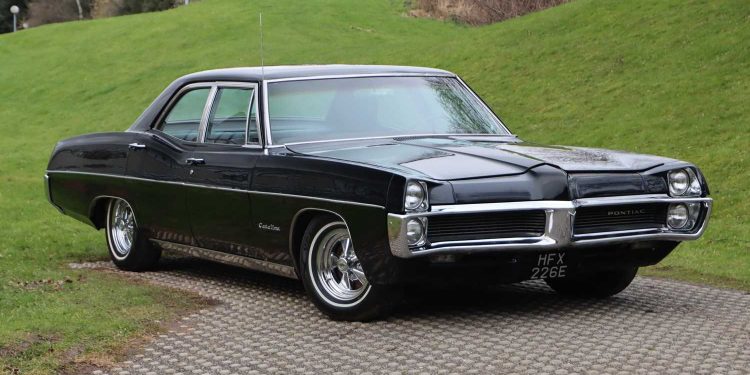
Like the Pontiac Bonneville, the Pontiac Catalina was a very significant model for the company. It established a few key precedents which would inform other Pontiac muscle cars after its release. The Catalina embodied the muscle car spirit of performance without the premium as an entry-level full-size model for the company that didn’t sacrifice performance.
The Pontiac Catalina became its own independent model in 1959 after being a trim level for the Pontiac Chieftain prior. Despite being the least expensive model in the full-size Pontiac lineup, the Pontiac Catalina featured better transmission options and a better 389 Tempest V8 engine than its Chevrolet counterparts. The 389 V8 Catalina was available between 1961 and 1967 in multiple engine configurations. The most powerful option was the 338-horsepower tri-power 389 V8. It was also offered with the larger 421-cid Pontiac V8, producing 376 horsepower in tri-power carb form.
1966 through 1969 saw major styling changes for the Pontiac Catalina. Between 1967 and 1968, the headlight configuration switched from a stacked design to an inline design. The headlight difference changed the front facia dramatically. The 389 and 421 V8 options were eventually eliminated in favor of even larger 400 and 428 Pontiac V8s that featured larger valves. A 455 cubic-inch V8 was also added in 1970.
The Pontiac Catalina led a massively successful racing career as well. In the 1960s, the Catalina 421 Super Duty was one of the most successful stock cars and drag cars of the time which significantly shaped Pontiac’s sporty identity. Due to NHRA homologation requirements, the Pontiac 421 engine that led the Catalina to racing success was also available in production Catalina models, with 421 Catalina Super Duty cars being some of the most sought-after Pontiac models to this day.
Pontiac GTO

It is hard to condense the scale of the Pontiac GTO into a concise segment, but we’ll try anyway. In many enthusiasts’ eyes, the 1964 Pontiac GTO is what launched the muscle car revolution. While it can be argued that other cars, like the Oldsmobile Rocket 88, were first to bat, the GTO created an undisputed benchmark. While the Pontiac GTO was offered from 1964 to 2006, the first two generations – between 1964 and 1972 – stand out most vividly in most people’s minds.
After branching out from being a trim level on the Pontiac Le Mans, the GTO rose to fame as a performance-built, mid-size chassis with a massive 325 horsepower 389 V8 under the hood. One of the primary reasons that the GTO stood out among the competition was its emphasis on factory performance options. The GTO came with sporty options like a Hurst shifter, performance suspension, hood scoops, and limited slip differential – all things that were very rare on production model cars at the time.
Between 1965 and 1967, the Pontiac GTO was restyled a number of times and multiple different body styles were introduced. The tri-power 389 GTO eventually reached a peak power figure of 360 horsepower in early 1966. It was then discontinued halfway through the model year. A larger 400-cid Pontiac V8 was introduced in 1967 with a maximum output of 360 horsepower with a 4-barrel carb.
Second Generation Pontiac GTO
The second generation Pontiac GTO was released in 1968 with a major styling change. The new model had a much more streamlined and modern look which would become iconic in the decades to follow. The Ram Air II engine package was introduced in 1967 with a new cam, better flowing cylinder heads, and a better exhaust. 1969 saw the introduction of the 400-cid Ram Air III and Ram Air IV engines. They produced 366 horsepower and 370 horsepower respectively.
The Pontiac GTO Judge was introduced in 1969 to compete with the affordable-yet-fast Plymouth Roadrunner. The Judge was slightly more expensive than the regular GTO, but for a reason. It stood out for having a massive rear wing, Ram Air 400 engine, and T-shaped Hurst shifter. The Judge would go on to become one of the most famous GTO models.
1970 was another year of significant change for the Pontiac GTO. The 1970 model received another facelift. In addition, it also received a number of handling-improving modifications like stiffer sway bars and variable power steering. The Pontiac 455 HO V8 was also introduced in 1970 with a peak horsepower rating of 360. Most Pontiac enthusiasts agree that was a dramatic underrating of the 455 HO’s true horsepower figure.
The Pontiac GTO is one of the most iconic muscle cars ever to hit the streets. While its legacy carried into the 21st century, it really was the first two generations that cemented the GTO name into the minds of nearly everyone on Earth in the 1960s and 1970s.
Pontiac Grand Prix
From the jump, the Pontiac Grand Prix was designed with performance in mind. Sharing a chassis with the Pontiac Catalina, the Grand Prix was marketed as a full-size option with tons of get-up-and-go. The first generation Grand Prix was released in 1962 with a “Trophy” 389 Pontiac V8 producing 303 horsepower. It also featured premium vinyl bucket seats and a dash-mounted tachometer. The first generation Pontiac Grand Prix could also be ordered with the larger 421 V8. The 421 Grand Prix came with either a four-barrel or tri-power carburetor configuration.
The Grand Prix got a refresh in 1965, ushering in the second generation of the model. Like many other Pontiac muscle cars that also received a restyle at the time, the Grand Prix featured a new “Coke-bottle” body shape. It also featured a new engine option. The top-of-the-line engine that you could order with the Grand Prix was the Pontiac Tri-Power 421 HO V8 engine. The 421 HO produced 371 horsepower in Tri-Power form, making it one of the most powerful engines at the time.
The Pontiac 389 V8 was phased out entirely by 1967 in favor of the 400-cid V8 and the 428 V8. In 1968, the engine options were uprated once again. The standard 400 V8 produced 350 horsepower and the 428 HO V8 produced 390 horsepower.
The Pontiac Grand Prix might not have had the same kind of racing success of the Catalina or the GTO, but it represented the fact that luxury didn’t have to exist independently from performance. As Pontiac’s premium model, the Grand Prix faced off against Cadillac and Buick. It often outperformed them due to Pontiac’s superior engines. The Grand Prix namesake would remain until 2008 despite being neutered significantly in the 1990s and 2000s.
Pontiac Firebird
It would technically be incorrect to call the Pontiac Firebird a muscle car. However, it still deserves a spot on this list as one of the most iconic cars that Pontiac ever released. The Pontiac Firebird was designed to be the Pontiac equivalent of the Ford Mustang and Chevy Camaro pony cars. The Firebird was designed on the Chevrolet F-Body chassis which it shared with the Camaro. Unlike all of the other Pontiacs on this list, the Firebird was manufactured outside of the 389 V8’s reign. The Firebird was initially available with a choice of five engines ranging from a 3.8L SOCH-V6 to the Pontiac 400-V8. The first generation of Pontiac Firebird was only available for two years before the second generation was released in 1970.
With the release of the second generation of the Firebird came a major restyling to a more free-flowing design. The second generation Firebird introduced a number of sub-models, including the Firebird Esprit, Firebird Formula, and Firebird Trans Am. Pontiac also released the second generation Firebird with 12 different appearance packages and special editions. The Firebird also featured 12 different engine configurations over the 11-year period between 1970 and 1981. The most popular and sought-after Firebird is the 400-cid Ram Air IV Firebird, as it was the most powerful Firebird. Following the 1973 oil crisis, Pontiac was forced to downscale their engines to be fuel efficient and produce less power.
The Pontiac Firebird is unquestionably legendary. It quickly became one of the most popular cars in the pony car segment. The Firebird truly was a worthy rival of the Chevrolet Camaro and the Ford Mustang. It continued to be extremely popular all the way through its discontinuation in 2002.
Best Pontiac Muscle Cars Summary
It is impossible to argue that Pontiac wasn’t one of the best muscle car manufacturers in history. Between the Pontiac GTO and Firebird alone, GM’s sport-oriented brand established themselves in the muscle car space. They didn’t relinquish their crown for decades. While Pontiac started out as a brand associated with reliable family transportation, the reshaping of the company by Bunkie Knudsen and John De Lorean truly established a new period of Pontiac revitalization.
In the late 1950s and early 1960s, the Pontiac Bonneville and Catalina served as a fantastic jumping-off point for the brand’s first foray into performance vehicles. Pontiac’s V8 engines, specifically the tri-power 389 V8, were the heart and soul of Pontiac’s early muscle cars. Without a solid engine under the hood, it is unlikely that Pontiac would have succeeded in the performance car world.
Once Pontiac’s muscle car roots were planted, they began perfecting the formula. The Pontiac GTO set a new benchmark in terms of a mid-size sports car with a V8 under the hood. That recipe inspired countless other competitors to develop some of their most famous models. The Pontiac Grand Prix would serve to represent that luxury and performance could go hand-in-hand. On the other hand, the Pontiac Firebird would become one of the most popular pony cars in the world. It would do so while competing with some of the fiercest opponents like the Ford Mustang and Chevrolet Camaro.
While Pontiac is no longer around, their legacy will always live on through the sensational cars that they brought to the table in the 1960s, 1970s and 1980s.

